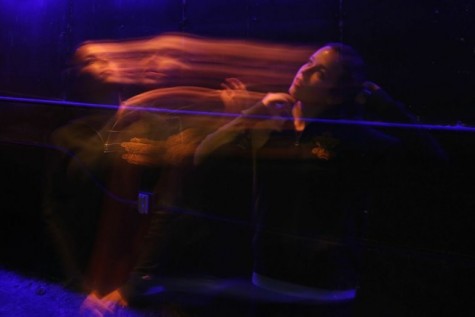Seven Things You May Not Know About the New Gries Center
As Berkeley students returned from summer break, they were greeted by the new Gries Center for the Arts and Sciences. From the 10 3D printers to a state-of- the-art recital hall, the Gries building provides an abundance of opportunities for learning experiences. However, as students rush from class to class, they may have not yet had the chance to explore certain aspects of the Gries Center.
- Fossils and Spaceship Parts
With fascinating items ranging from a fossilized stegosaurus egg to a NASA space shuttle engine rotor fragment, the Gries Center displays rich in both history and science. This scientific display, located in the Kuhn Hall near the Deans’ Suite, also features an “Evolution of Technology” timeline, which chronicles the changes in computer software and information storage.
- “Super” Hooks
“With the proper angles and pulley we could actually lift a car,” said Dr. Nicole Ackerson, Science Department Chair, referring to the series of hooks which lines the ceiling of a new physics classrooms. While a car lifting project is not currently in the works, these small classroom details will allow students to think big about future physics assignments.
- A Place to Practice
In addition to art studios and a black box theater, the Gries Center includes four music rooms, each designated for a different musical discipline. Not only does each classroom include a keyboard or piano, but each space also has two separate rooms equipped with pianos for more individualized practice.
- Mic Check
According to Brian Panetta, MD and UD Visual and Performing Arts Instructor, the Gries Center music rooms include microphones and audio equipment that allow the recording of ensemble work for instant playback.
- Luxurious Labs
The Gries Center, of course, also has exceptional science facilities. According to Ackerson, the chemistry classrooms are equipped with multiple “chemical grade,” explosion proof glass fume hoods that will allow students to perform experiments instead of simply watching teacher demonstrations. In addition, the classroom housing Berkeley’s Microbiology and Microbes and Man classes includes two professional grade German incubators, staining trays, and microscopes for every student.
- Robotics “Playing Field”
The Gries Center features a lab specifically dedicated to robotics; the facilities include a robotics playing field next to the area where robots are built, so that they can be easily tested and fixed. “This [room] is really going to boost our robotics program,” said Ackerson.
- Plenty of Room for Fruit Flies and Fungus
Situated between science classrooms, project rooms provide a separate space for students to carry out long term experiments–such as those involving fruit flies and other specimens–or for students to have an opportunity to make-up labs that they might have missed in class.
As they settle into the new classrooms and school routine, members of the Berkeley community will surely continue to uncover new features of the Gries Center for the Arts and Sciences, and will utilize them to make even greater discoveries.
Editor’s Note: The Fanfare staff has also confirmed that the Warhol work in the lobby of the Gries Center is authentic.

Hillary McLauchlin is a senior and former staff writer and Features Editor who currently serves as a General Editor. In addition to writing for the Fanfare,...

Alex Livingstone is currently flawlessly executing her job as photo editor for Fanfare during her senior year at Berkeley Preparatory School. While not...







